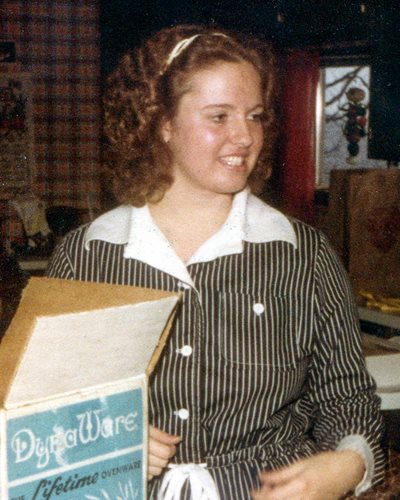October 22, 2021 (Anchorage, AK) – The Alaska Bureau of Investigation (ABI) Cold Case Investigation Unit (CCIU) recently launched another attempt to identify the remains of one of serial killer Robert Hanson’s victims, the young woman that has been identified as Horseshoe Harriet for 37 years. In August 2021, a new DNA profile for the victim was generated and uploaded into a public access genealogy database. Utilizing several close matches, a family tree for the victim was constructed. Genealogy research by Parabon Nanolabs and ABI indicated that the victim might be a woman named Robin Pelkey.
Pelkey had been born in 1963 in Colorado. Additional research identified a few potential relatives of Pelkey’s that currently reside in Alaska and Arkansas. Records indicated that she had been living in Anchorage in the early 1980s when Hansen was active. Pelkey would have been 19 at the time of her murder and no record was found reporting her missing.
 Ms. Robin Pelkey, photo taken just before her 18th birthday.
Ms. Robin Pelkey, photo taken just before her 18th birthday.
ABI contacted the Arkansas State Police and requested their assistance. They contacted a very close relative of Pelkey’s and obtained a DNA sample. The sample was sent to the State of Alaska Scientific Crime Detection Laboratory in Anchorage. Kinship DNA analysis completed in September 2021, confirmed that “Horseshoe Harriet” is in fact Robin Pelkey.
In October 1983, Alaska State Troopers arrested suspected serial killer Robert Hansen. At the time, he was suspected of murdering four women, whose bodies had been discovered in Southcentral Alaska between 1980 and 1983. In February 1984, Hansen agreed to plead guilty to the four murders and several other felony crimes. Hansen eventually admitted to murdering a total of 17 women and accompanied investigators on a helicopter flight where he pointed out the grave sites. The Alaska Bureau of Investigation is currently using genetic genealogy to identify Eklutna Annie, who is the last unidentified victim of Hansen.
“I would like to thank all of the troopers, investigators, and analysts that have diligently worked on this case over the last 37 years. Without their hard work and tenacity, the identity of Ms. Pelkey may have never been known,” said
Alaska Department of Public Safety Commissioner James Cockrell. “The Alaska Department of Public Safety will leave no stone unturned in our efforts to solve major crimes in our state, hold anyone that violates our laws accountable, and bring closure to a victims’ family.”
In the past few years, genetic genealogy has developed into a tremendous forensic tool for identifying both the perpetrators of unsolved homicides and as in this case their unidentified victims. The Alaska Department of Public Safety has used genetic genealogy in the
1978 Shelley Connolly homicide,
1993 Sophie Sergie homicide, and
1996 Jessica Baggen homicide.
The surviving next of kin of Robin Pelkey has requested that they not be contacted directly while they come to grips with this heartbreaking news. The Department of Public Safety has purchased a new grave marker identifying the final resting place of Ms. Pelkey at the Anchorage Memorial Park Cemetery.
###
PDF Version of Release